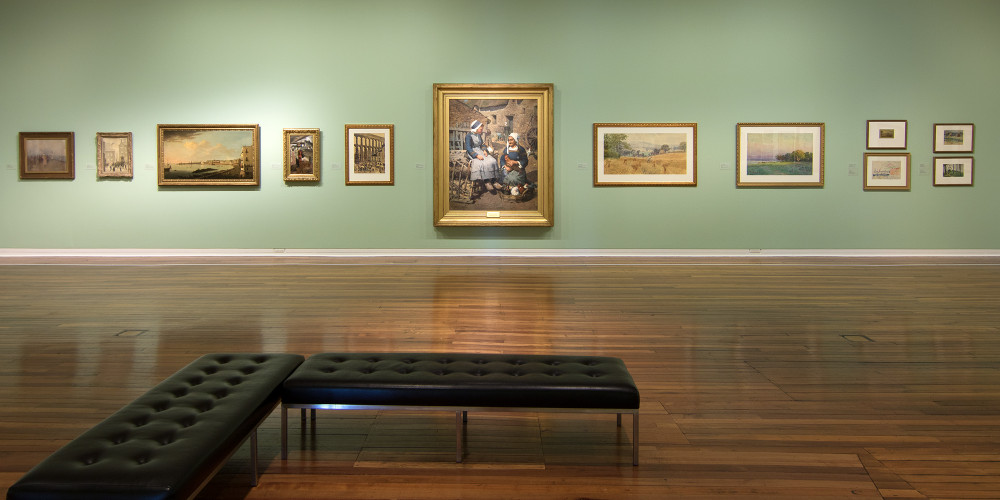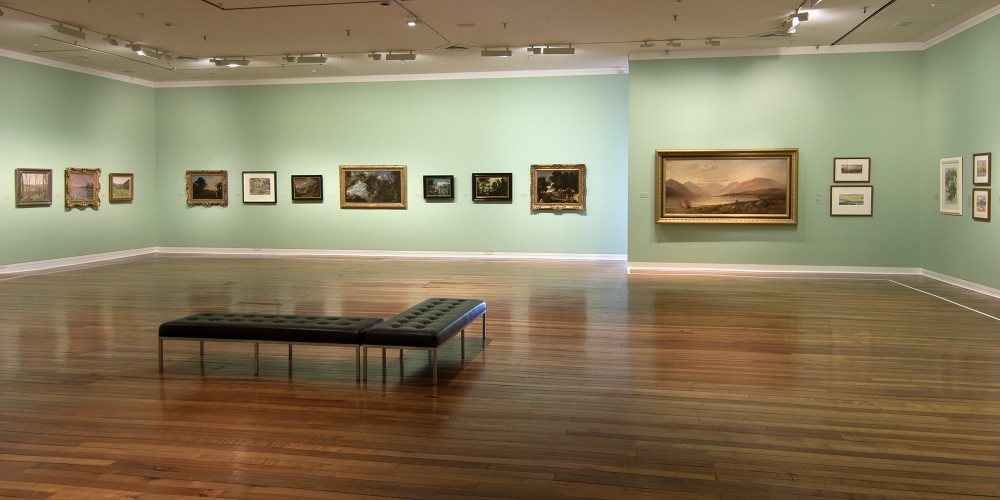Somewhere Up Country
Landscapes from the Collection
8 July 2017 - 23 October 2017
In the hierarchy of painting genres formalised by the European academies of the 17th and 18th centuries, landscape hovered some-where in the middle – outranking the still life but eclipsed by both portraiture and grandiose history paintings. Aware of this hierarchy, yet nevertheless compelled to capture the splendour of the land, many painters created clever loopholes. Populating the landscape with classical ruins for instance, repositioned the landscape as a backdrop to biblical or mythical scenes – a tactic we see at play the 1654 painting Landscape with Hagar and the Angel, by Claude Lorrain.
The 19th century saw another important shift in the treatment and depiction of the landscape with the move from Romanticism to Realism. Romanticism celebrated the idealised, wild and sublime landscape – highlighting the immense power and unpredictability of nature. On the other hand, Realist artists focused on reflecting their immediate surroundings as truthfully as possible. Here, the impact of the industrial revolution, and the significant growth and change in society, saw a new importance placed on openly and honestly depicting the struggles of the working class. In Somewhere Up Country, these dichotomies are reflected in the inclusion of works by Michiel Versteeg and J.M.W Turner alongside those by L.S. Lowry, Jacques-Joseph Tissot and Stanhope Forbes.
Somewhere Up Country takes its title from William Sutton’s depiction of the Canterbury landscape, celebrating the breadth and diversity of the landscape genre within the Dunedin Public Art Gallery’s international and New Zealand holdings. Works by beloved French impressionists including Lucien Pissarro, Paul Signac, and Claude Monet sit together with works that respond to our unique landscape here in Aotearoa New Zealand, by artists including Rita Angus, Frances Hodgkins, John Hoyte, William Matthew Hodgkins and Petrus van der Velden.
Somewhere Up Country highlights the immense power of the landscape and the various methods of realistic and subjective representation. Together, these works show the significant and enduring influence the landscape has had on artists over centuries.
View the exhibition labels – click here






